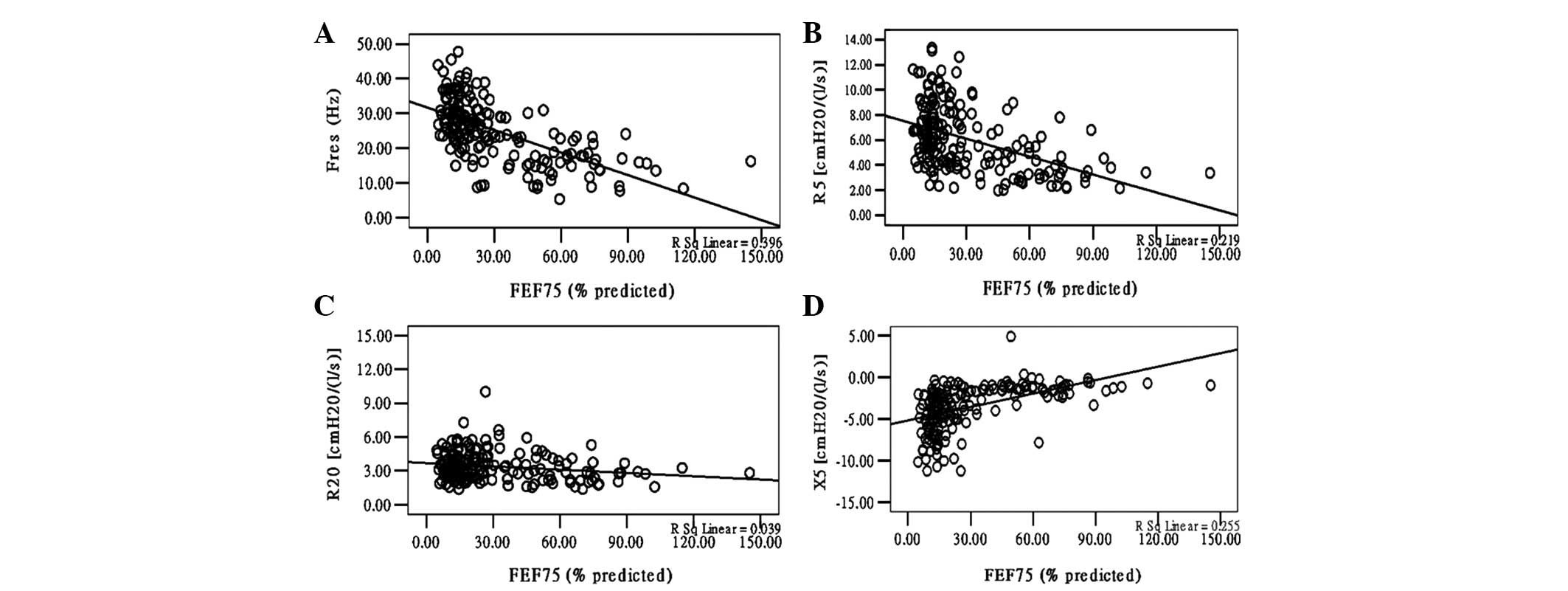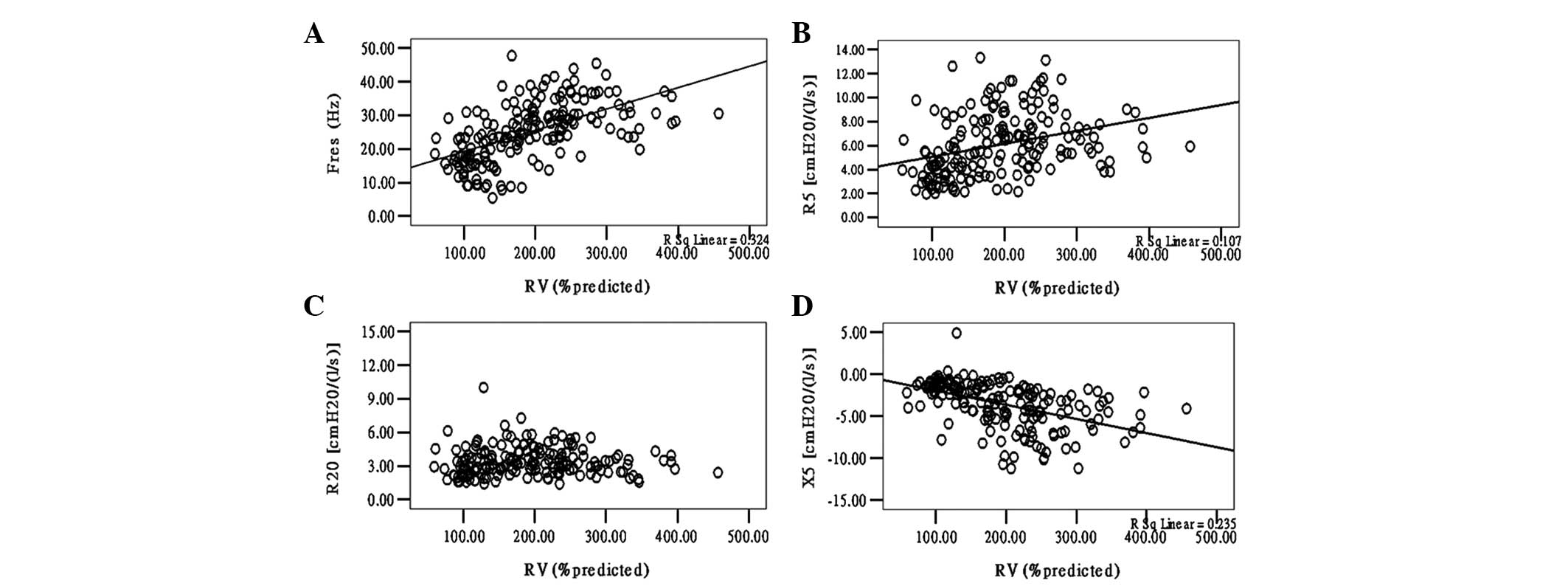Evaluation of respiratory impedance in patients with chronic obstructive pulmonary disease by an impulse oscillation system
- Authors:
- Published online on: September 2, 2014 https://doi.org/10.3892/mmr.2014.2528
- Pages: 2694-2700
Metrics:
Total
Views: 0 (Spandidos Publications: | PMC Statistics:
)
Total PDF Downloads: 0 (Spandidos Publications: | PMC Statistics:
)
Abstract
An impulse oscillometry system (IOS) assesses pulmonary resistance and reactance. The present study investigated which IOS measurement is correlated with airflow obstruction, airway conductance and lung volume in chronic obstructive pulmonary disease (COPD). A total of 180 patients with COPD were selected and 95 agreed to follow‑up 1 year after the initial tests. IOS measurements [R5, R20, X5 and resonant frequency (Fres)], body plethysmography [forced end‑expiratory flow (FEF)75, total lung capacity, residual volume (RV) and total inspiratory resistance (Rtot)] and spirometry [forced expiratory volume in 1 sec (FEV1)] were performed. Pearson's or Spearman's correlation tests were used to determine the correlation between the IOS and other measurements. R5, X5 and Fres were all significantly associated (P<0.05) with FEV1, FEF75, RV and Rtot. However, R20 was not correlated with these measurements except from FEF75 and Rtot (r values were all <0.25). The strongest associations were observed with FEV1 and the reactance measurements X5 (r=0.635), Fres (r=‑0.721) and R5 (r=‑0.496); FEF75 with X5 (r=0.505), Fres (r=‑0.629) and R5 (r=‑0.468); RV with X5 (r=‑0.485), Fres (r=0.570) and R5 (r=0.326); and Rtot with X5 (r=‑0.691), Fres (r=0.632) and R5 (r=0.570). There was a significant increase in FEV1 and X5 after one year as compared with the RV. The other measurements did not change over the year. The changes in X5, Fres and R5 were significantly correlated with the changes in FEV1 and the correlation coefficients were 0.355, ‑0.364 and ‑0.381, respectively. Similarly, the changes in X5, Fres and R5 were significantly correlated with the changes in RV and the correlation coefficients were ‑0.264, 0.287 and 0.318, respectively. In the COPD patients, the IOS reactance measurements were more closely correlated with other pulmonary function measurements rather than with resistance measurements. The IOS reactance measurements, particularly X5, appear to indicate changes in pulmonary compliance caused by airflow obstruction.















